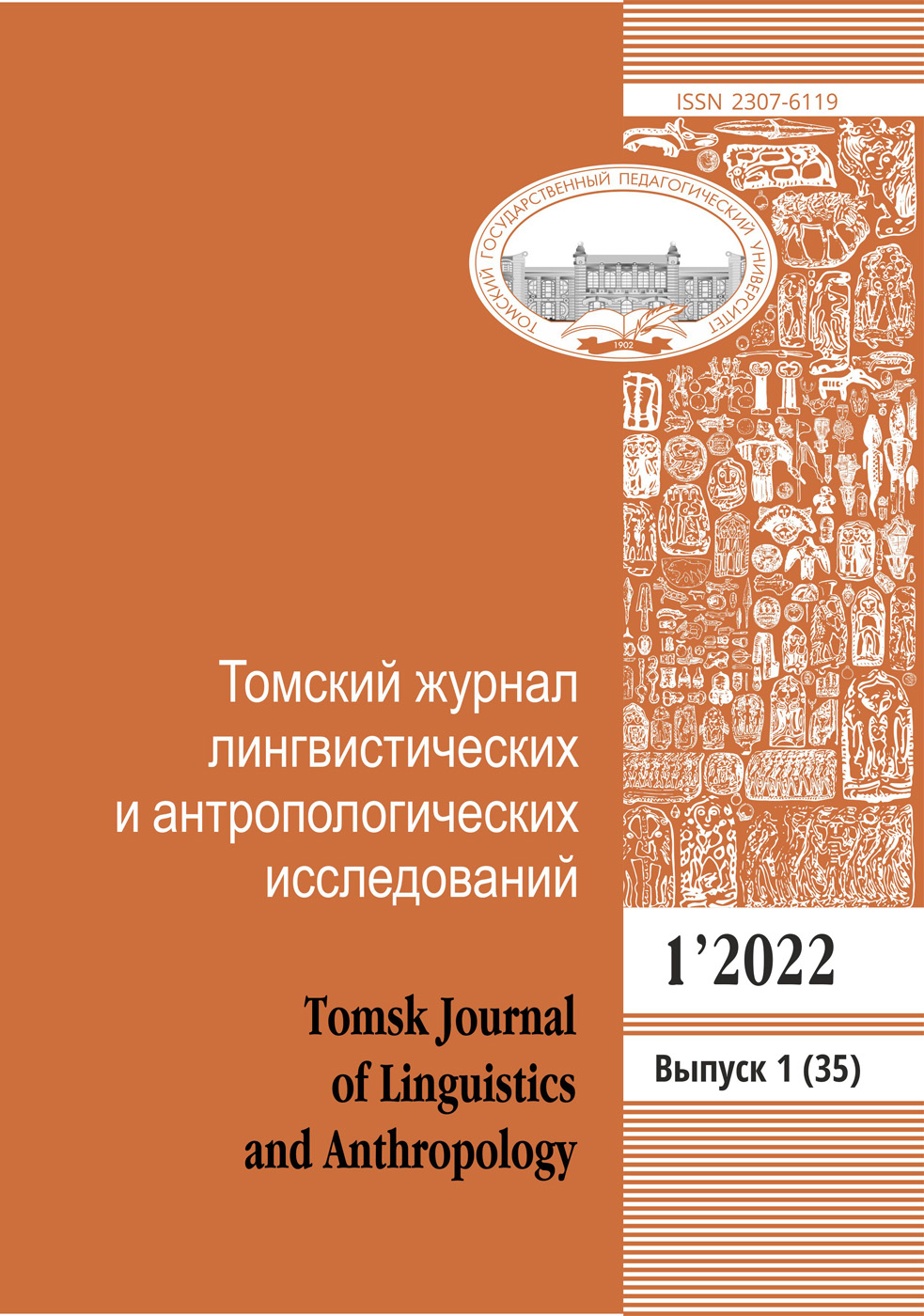LINGVO-CULTURAL ORIGINALITY OF THE REGIONAL INFOSFERE: CREATIVE WORKS OF TOMSK ROCK-POET V. SHESTAKOV IN THE CONTEXT OF THE SIBERIAN PUNK SUBCULTURE
The creative works of the Tomsk rock leader of the late 1980s – early 1990s V. Shestakov are considered in the given article in order to describe the lingvo-cultural originality of the regional infosfer. The poet’s discourse is seen in the aspect of the reflection of Siberian punk subculture in it. Born in the years of perestroika, the Siberian punk embodied in poetic texts own tragic vision of the social reality of the USSR in transition and clearly outlined protest not only against the official ideology, but also against the absurdity of the world order as a whole. A striking example of Tomsk Siberian punk version was the creation of the group “Children of Obrub” and its leader Viktor Shestakov, in whose poetry such traits as hypertrophic nihilism, pessimism, nonconformism, and acute social orientation are embodied. These features are characteristic of Siberian punk subculture as a whole, they originally refracted in a peculiar system of symbols and images inherent idiostile of creative language personality of Tomsk rock poet.
Keywords: regional infosphere, creative linguistic personality, Siberian punk subculture
References:
1. Karpushkin V. G., Shmeleva T. V. Rap as a new form of language existence in the Slavic world. Slavic languages: units, categories, value constants. Volgograd, 2009. Pp. 423–437 (in Russian).
2. Shevchenko O. V. Subculture as an object of linguo-cultural research. Proceedings of Russian Stata Pedagogical University of A. I. Herzen, 2009, no. 114, pp. 241–248 (in Russian).
3. Andreev V. K. Linguistic parameters of typology of modern youth subcultures. Bulletin of Volgograd State University, Linguistics, 2011, no. 1, pp. 92–98 (in Russian).
4. Pavlova D. S. Subculture of modelers of work of UN bodies: verbal and nonverbal communication. Socio- and psycholinguistic research, 2013, issue 1, pp. 86–89 (in Russian).
5. Orlova O. V. Specifi city of realization of media concept oil in the discourse of the small print press of the Tomsk region (on the newspaper example “The Narymsky bulletin”. Tomsk State Pedagogical University Bulletin, 2012, no. 1, pp. 232–236 (in Russian).
6. Voronina S. A. Role of the press in the transformative impact of youth subcultures on popular culture of contemporary Russian society. Dis. cand. sociol. sci. Barnaul, 2002. 186 p. (in Russian).
7. Aksyutina O. A. Punk culture as a phenomenon of youth counterculture of the former Soviet Union. Modern transformation of the Russian culture. Moscow, Nauka Publ., 2005, pp. 564–603 (in Russian).
8. Kulikova M. Always against. Ogonek, 2005, no. 10, pp. 46–47 (in Russian).
9. Siberian punk. URL: http://poiskm.biz.ua/genre/siberian%20punk (Accessed: 1 May 2014) (in Russian).
10. Sidel’nikov A. The birth of punk-culture in the USSR. URL: http://diletant.ru/articles/5144022/?sphrase_id=394733 (Accessed: 1 May 2014) (in Russian).
11. Efremova T. F. New Russian Dictionary. Explanatory-derivation. Moscow, Russkiy yazik Publ., 2000. URL: http://efremova.info/word/krest.html#. U8qkXPl_s24 (Accessed: 1 May 2014) (in Russian).
12. Kareva N. A. Color perception in the works of art. Dis. cand. philos. sci. Moscow, 2004. 185 p. (in Russian).
Issue: 10, 2014
Series of issue: Issue 10
Rubric: ACTUAL PROBLEMS OF COGNITIVE AND DISCOURSE LINGUISTICS
Pages: 174 — 177
Downloads: 1280





